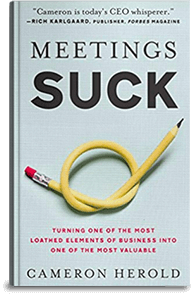Ever notice how the same people tend to talk a lot in meetings and those who are usually quiet never speak up?
Quiet COOs against intense outspoken CEOs are a common example of how communication in most top-level meetings is quite lopsided, with one party doing all of the talking.
So, what can you do about this?
Notice the Value Others Can Have in a Conversation
As the Chief Operating Officer, or as another leader, you might often feel as if you could have added good value to the conversation, if only you were given the chance to speak up. This applies to all of your employees as well.
In other words, if you are a COO who has to remain quiet when the C-Suite team meets, then the least you can do is encourage the quieter employees who report to you to speak up in meetings and join the conversation. Why? Because you know what it feels like to be stuck being silent, so try your best to make sure others don’t feel that way.
If you’re a CEO, you need to seek other people’s knowledge and opinions. You are essentially second in command to no one, meaning that you have no outside perspective if you don’t encourage others to speak up to you.
Engage with All Participants
In order to run successful meetings, you must engage with every single meeting participant, especially the ones who typically remain silent. With some encouragement, these people could really add value to the discussion.
During meetings, foster dialogue with the newcomers or quiet employees first, and then move around the table, moving up in seniority as you solicit feedback.
Leaders should always give feedback last so that they don’t sway the group one way or the other. This is actually one of the key employee management tips that are taught in CEO, CFO, and COO training seminars to help executives build a more cohesive team.
Try the Post-It Note Strategy
Another way to encourage others to share their ideas is through the Post-It note strategy. It’s easy: simply give every meeting participant some Post-It notes and instruct them to write down five to ten ideas, one per note.
Then, get everyone to put their ideas up on the wall and get them to read them aloud. It’s an opportunity for everyone’s ideas to be out there and listened to and if everyone is doing it, it’s a lot less nerve wracking.
“Your employees are going to be much more invested in the ideas this way because they feel as if their voices were heard. If they feel this way, they’ll work a lot harder to make the ideas come to life.” – Cameron Herold
Eliminate Distractions
To foster useful communication it is essential that people aren’t distracted by emails or tests. Sometimes it can be useful for people to bring their phones or laptops to meetings to make notes, but emails and texts distract others and yourself from the task at hand.
If you suspect that someone is emailing, ask them to stop and show everyone what they’re doing. If you catch them emailing, they owe $10 to the company’s entertainment fund or company charity. It works like a charm!
If you call someone out on it and you’re wrong, you owe them lunch instead. It’s a fun way to enforce meeting etiquette without rebuking and insulting employees. Plus, it encourages people to pay attention to the moment. It’s hard for people to want to speak up if they think that no one is going to be paying attention anyway!
Communication is essential in any good company, so it’s important for leaders to know how to encourage it in others.
How do you foster useful communication? Any good tricks? Let us know in the comments below.
If you have questions or would like more information, I’d be happy to help. Please send an email, and my team will get in touch with you!
Editor’s Note: This post was originally published in August 2017 and has been edited for accuracy and comprehensiveness.




